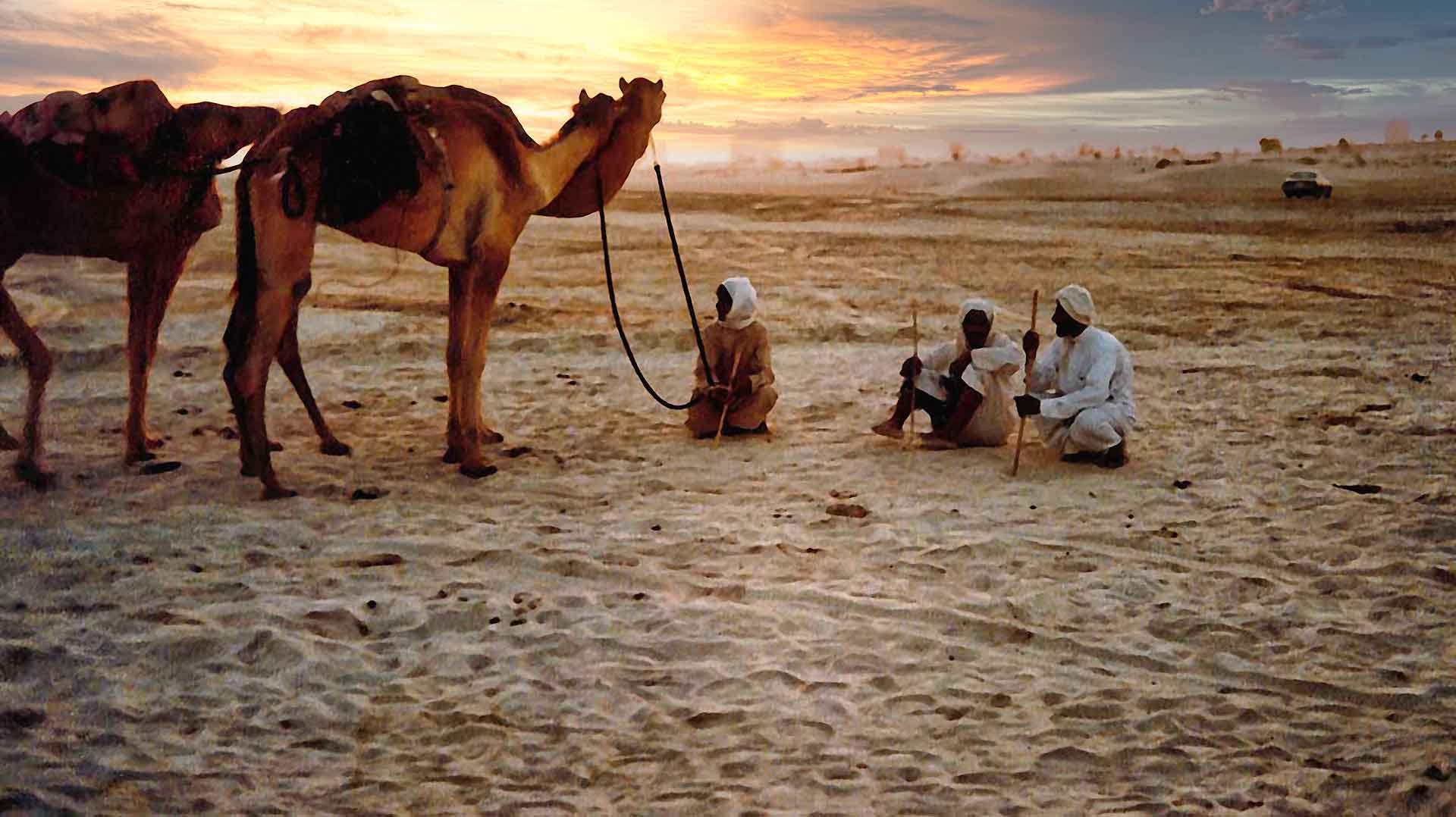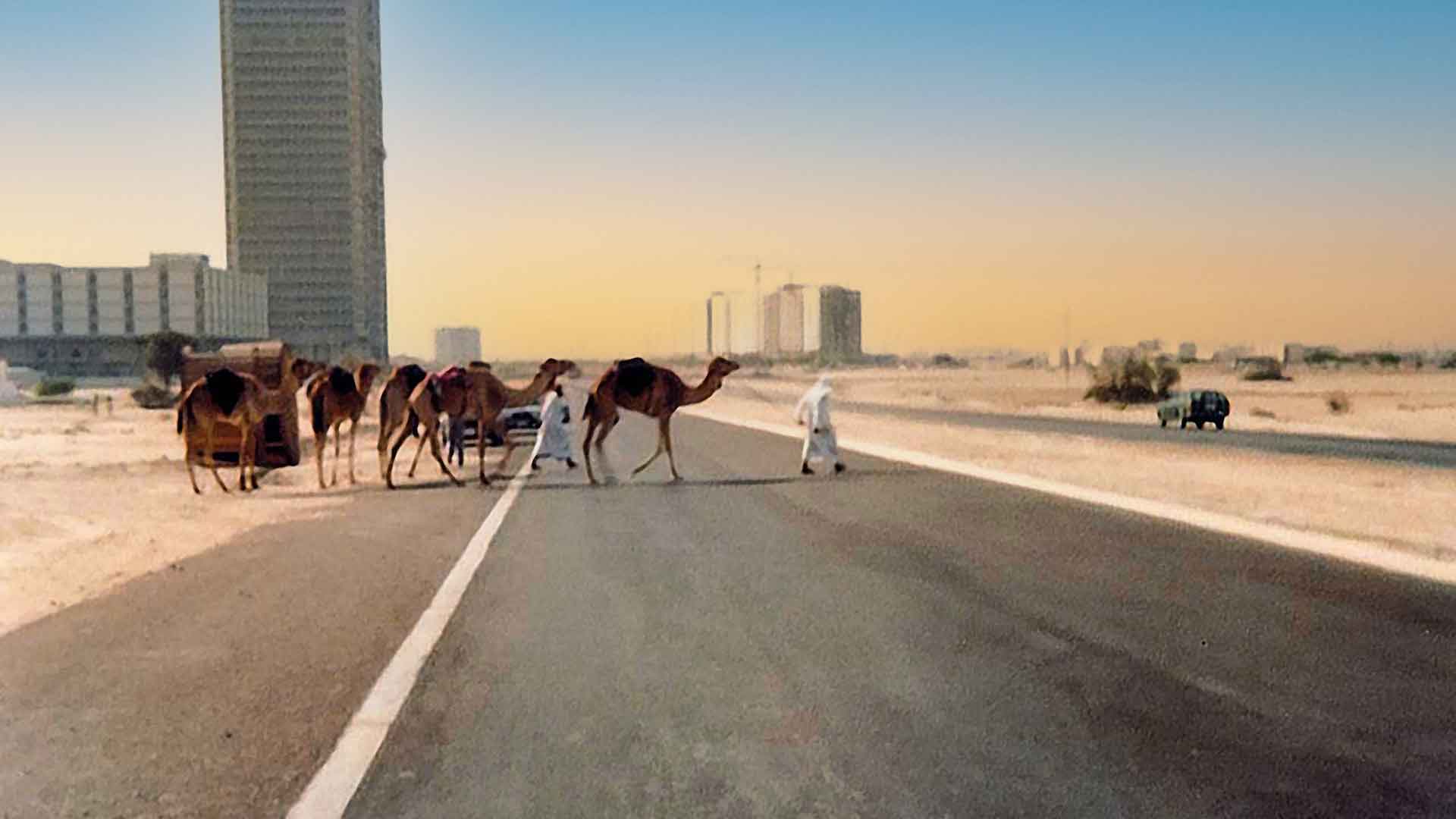
Dubai's Camels are Arabian camels
Thought to have been domesticated before 3000 BC by Frankincense Traders.
Camels transported Frankincense from Yemen and Oman to Middle East markets.
Dubai would have been a transit point for the Frankincense Trade

Source Twitter
By late 1970s Dubai was developing into an International Trading Centre but still maintained close contact with its traditional desert heritage.
Bedu's everyday way of desert life was very visible albeit sometimes dangerously so when it came to camels crossing newly built highways.
Ray Webster describes his images as being close to Sheikh Zayed Road.
This name was not officially used until after Sheikh Maktoum bin Rashid Al Maktoum became Ruler following his father's final illness in early 1980s.
In 1970s this road was known in Dubai as "The Abu Dhabi Road".
This road had a different name in Abu Dhabi!



Beautiful but Dangerous!
Dubai had a lot more open desert and no camel fences back in the 1970s and 80s.
Camels freely roamed over the desert and had open access to Dubai's roads. Result was a growing conflict between camels and motorists.
Colliding with a camel on Dubai's roads meant fatal results for the camel, the motorist and often the passengers too. Many lives were lost, particularly in night time collisions with camels on the Sheikh Zayed Road.
Eventually camel fences and underpasses were constructed to restrict areas camel could roam. Over time the growing urbanisation of Dubai meant there were fewer open areas of desert adjacent to roads for camels to roam.
As a result camel/car collisions diminished.